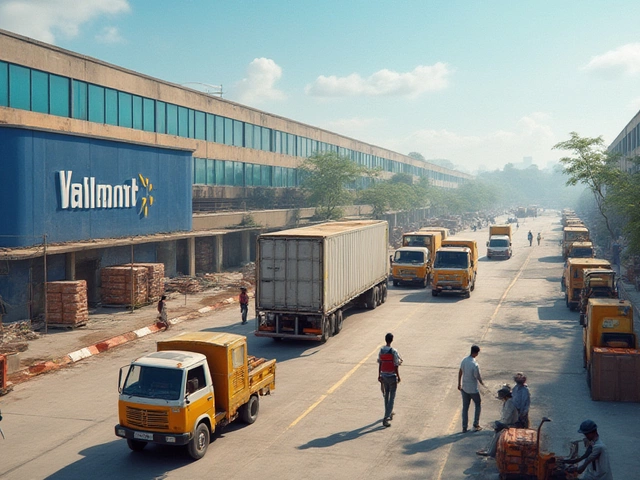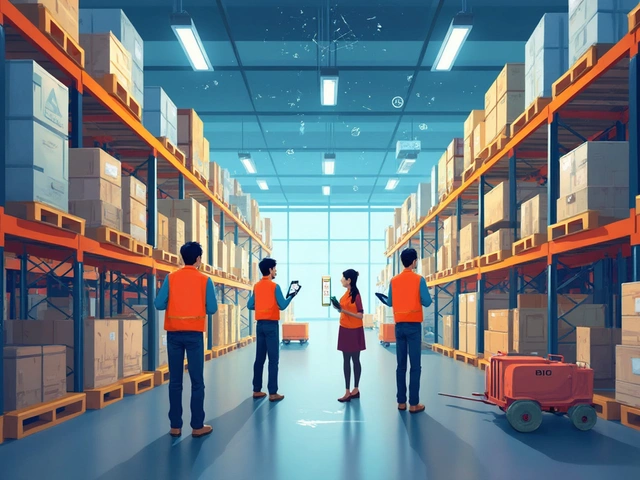Thinking about diving into the world of freight forwarding? It's not as daunting as it seems, but it’s not a walk in the park either. Freight forwarding is all about moving cargo from one place to another through a multitude of complexities. So, what's the secret sauce for success? Well, first things first, understanding the basics is crucial.
Freight forwarding requires a keen grasp on logistics, which involves organizing and managing the transport of goods. But logistics isn't just about moving stuff around; it's a nifty dance of coordination between suppliers, transport companies, and customers, all revolving around timing and cost. You can't overlook the importance of clear communication and robust planning.
And let's talk about tech. In today's fast-paced world, leveraging technology is non-negotiable. Tools for tracking and automating processes can not only enhance efficiency but can save you a fair bit of cash too. Think real-time tracking software, supply chain management systems, and digital payment solutions to streamline your operations.
Understanding the Basics
Dipping your toes into the world of freight forwarding? It's essential to get a handle on the foundational elements that make this industry tick. Let's break it down into bite-sized insights.
What is Freight Forwarding?
At its core, freight forwarding is about getting goods from point A to point B. However, it's not as simple as just tossing items on a truck or a ship. It involves coordination, paperwork, and logistics magic to ensure everything runs smoothly without hiccups.
Key Players in the Game
Understanding the major players in the logistics chain is crucial. From shippers and carriers to customs brokers and consignees, knowing who's who helps in coordinating effectively. Each has a role and understanding their functions aids in smoother transactions.
The Importance of Documentation
You can't talk about freight forwarding without mentioning documents. Bill of lading, commercial invoices, and packing lists—these aren't just paperwork; they're the backbone of your operations. They ensure legal compliance and smooth over potential disputes.
Core Processes
Here's a quick look at the typical processes involved:
- Planning routes: It’s about finding the quickest, most cost-effective paths.
- Coordinating shipments: Aligning departures and arrivals to maximize efficiency.
- Managing inventory: Keeping tabs on stock levels to avoid over or understocking.
- Tracking shipments: Real-time updates ensure things are on the right track.
These processes require a sharp eye for detail and an ability to multi-task like a champ.
Costs Involved
Freight forwarding isn't just about the cargo; it's also about managing costs. Typical costs include transportation, warehousing, and administrative fees, among others.
| Cost Type | Average Percentage of Total Cost |
|---|---|
| Transportation | 60% |
| Warehousing | 20% |
| Admin & Miscellaneous | 20% |
Understanding and managing these costs is vital for running a profitable operation.
Grasp these basics, and you’ll have a solid foundation to build your expertise in the world of freight forwarding.
Leveraging Technology
In the ever-evolving world of freight forwarding, embracing technology is like having a superpower. Today's tech isn't just bells and whistles; it's the engine driving efficiency and cost-effectiveness in logistics.
Real-Time Tracking
Let's start with real-time tracking. Knowing exactly where a shipment is, at any given time, can make a world of difference. GPS tracking systems allow you to provide precise updates to your customers, enhancing transparency and trust. Imagine giving your customer a play-by-play of their shipment’s journey—impressive, right?
Automation and AI
Next up is automation. Automation tools are like having extra helping hands that never tire. They streamline operations by handling repetitive tasks such as data entry, invoicing, and scheduling. With AI, you can delve into predictive analytics, offering insights into delivery times and routes, helping you plan even better.
Software Solutions
There are tons of software solutions available that cater specifically to the logistics and supply chain sectors. Whether it's warehouse management systems or digital payment solutions, these tools help in reducing errors, saving time, and ultimately, cutting costs.
"The use of technology and automation in freight forwarding is not a luxury, but a necessity to stay competitive and meet customer expectations." - Logistics Management Review
Data and Analytics
In terms of data, getting actionable insights is like striking gold in freight forwarding. By diving into the numbers, you can identify trends, optimize routes, and make better-informed decisions that impact your bottom line positively. Here's a quick look at how logistics software can enhance operations:
| Feature | Benefit |
|---|---|
| Route Optimization | Reduces fuel costs and delivery times |
| Inventory Management | Improves stock accuracy and reduces waste |
| Customer Relationship Management | Enhances customer satisfaction with timely updates |
Tech in freight forwarding isn't just a trend; it's foundational. By adopting and adapting to the latest advancements, you set your business up for success, keeping ahead of the competition and ensuring customer satisfaction in the long haul.

Building Strong Networks
In the world of freight forwarding, rubbing elbows with the right folks can make or break your business. Networking is more than just meeting people; it's about forging relationships that uplift your logistics capabilities. So how do you do it?
Why Networking Matters
Think of networking as your personal spider web across the industry. Your connections can help you navigate complex shipping challenges, access new markets, and even negotiate better deals. When you're a freight forwarder, these alliances are invaluable.
Start Local, Think Global
Begin by attending local industry events and meetups. These gatherings are gold mines for making connections with suppliers, carriers, and other key players. But don't stop there! International trade shows and virtual webinars are perfect for expanding your network beyond local borders.
Partnerships with a Purpose
Build partnerships with an eye on shared goals. A solid partnership can streamline your logistics processes and improve your service quality. Shared objectives often lead to better resource allocation and operational synergy, which is a win-win.
Stay Active Online
The internet has no boundaries, and neither should your networking. Join online groups and engage with peers on LinkedIn. Being active in online forums can place you in the favor of potential clients and partners from around the globe. Plus, being in the loop lets you stay informed about the latest industry trends.
Leveraging Data for Better Connections
Having data-backed insights can strengthen your network. Knowing market trends, shipping rates, and regulation changes can make you a valuable resource. Share insightful data with your network to position yourself as a knowledgeable partner.
| Network Type | Benefit |
|---|---|
| Local Meetups | Direct connections with nearby shippers and carriers |
| International Events | Access to global markets and broader knowledge base |
| Online Communities | Continuous engagement and up-to-date industry trends |
In a nutshell, strong networks are your backbone in the shipping and supply chain world. Build relationships like you're laying bricks for your business's robust foundation.
Navigating Regulations
If you’re diving into the freight forwarding biz, you'll quickly learn that regulations are no joke. Staying compliant isn't optional; it's a must. But how do you keep your head above the water when there's a sea of rules and policies?
First off, you need to have a solid understanding of international shipping laws. These laws can vary significantly from one country to another, so it’s essential to be well-versed with the specific rules of the regions your goods are traveling to and from.
Customs Compliance
One major part of freight forwarding is handling customs clearance. This can be a minefield if you’re not prepared. Each shipment needs to be accompanied by the correct documentation, like commercial invoices or a bill of lading. Any hiccup here and your shipment could be held up, costing you both time and money.
Consider developing a checklist for all the required documents and verify them twice before your shipment hits the road. Working closely with customs brokers can also help you navigate these waters.
Tariffs and Trade Regulations
Besides customs, there's the matter of tariffs and trade regulations. These can fluctuate, impacting what and how much you need to pay when shipping across borders. Keeping abreast of trade agreements between countries, like Brexit implications in the UK, can help you plan port-of-origin and destination strategies more effectively.
Keeping Up with Changes
Change is constant with logistics regulations, so staying informed is half the battle won. Attending industry seminars, joining shipping and logistics associations, subscribing to newsletters from regulatory bodies—these are ways to keep updated on the latest changes and updates in shipping regulations.
Here’s a quick stat for you:
| Year | Update Frequency of Trade Regulations |
|---|---|
| 2022 | 5 times/year |
| 2023 | 7 times/year |
Conclusion: Mastering the regulatory landscape can feel overwhelming at first, but with the right strategy and a keen eye on details, it becomes much more manageable. Remember, failing to navigate this aspect means risking delays and increased costs, which can affect your bottom line.





